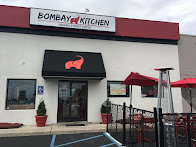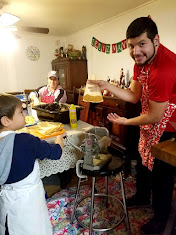Yesterday, I attended one of my first public events since covid-19 shut things down. It was the Asian Heritage Festival: A Showcase of Local Asian Women Owned Businesses. It was organized by two nonprofits, Women of Toledo and HerHub (www.womenoftoledo.org/www.419herhub.org). The first “advocates for diversity and inclusion with a focus on economic empowerment.” A worthy cause, and the festival advertised art, food, and fun. There were a number of art activities and educational displays as well as a Bollywood dance lesson.

Shokudo Kitchen from Perrysburg, Ohio was there with choices of Korean beef bulgogi or Japanaese teriyaki, rice or noodles, and a side (Asian slaw, kale power blend, or edamame). I didn’t have enough tickets to try everything and had to pass on this one. It looked delicious, although adapted to American styles of serving and current trends in mixing flavors and ingredients from different cuisines.. Food has always been adapted to new circumstances and new tastes, so that authenticity is a false illusion. These fusion and “Asian inspired” dishes can be a good entryway into a new food culture for newcomers, but they also reflect a newer aesthetic that some describe as cosmopolitan.

Kay was being helped by her daughters, who were all wearing Vietnamese ao dai, a close filling long tunic over flowing pants. That brought back memories also and somehow made the food taste even better!
The final tasting was dessert from the Tiger Bakery in Toledo, one of my favorite sources for Middle Eastern food. They feature dishes from Syria, Jordan, Lebanon, Palestine, and Libya, reflecting the heritages of the cooks and owner. For this event they gave out two baklava, a pastry of ground nuts (I think in this case, walnuts) layered with thin sheets of phyllo dough and soaked in honey and syrup. The dish is not only delicious; it also shows the complexity of foods and cultural identity. Variations of baklava are found all over the Levant, all around the Mediterranean Sea, and into southern and southeast Europe. It’s one of those foods that a lot of cultures claim, but something this good is always going to transcend national boundaries.
Most of the audience at the festival were likely unaware of the histories of the various dishes and cuisines being offered. They probably would have found them interesting, but the real intent of the event was successful. It brought people together to support local Asian businesses, and in doing so, people were clearly relishing the food, the chance to socialize, and the various activities being presented. It was a pleasurable outing for me, and I appreciate the 419 Culinary Nomads (World Affairs Council of NW Ohio: https://www.facebook.com/groups/506208900563098/) letting me know about the event.
More events of this type can help spread understanding of the diversity of and within cultures.






